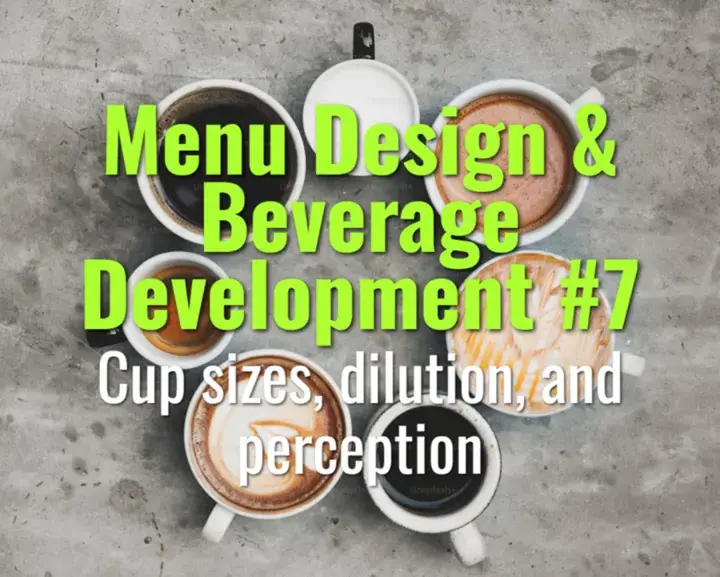Cup sizes, dilution, and perception
How cup size and dilution influence flavor perception, drink balance, and customer expectations in a café menu.
- Coffee Basics Nerds
- 2 min read
Article 7 of 12 in Menu Design & Beverage Development/

Cup Sizes and Expectations
- Espresso Cups (60–90 ml): Designed for concentrated flavors; crema preserved.
- Cappuccino Cups (150–180 ml): Balance between espresso, milk, and foam; enhances foam integration.
- Latte Mugs (240–300 ml): Larger size emphasizes milk sweetness and smoothness.
- Takeaway Cups: Sizes (8 oz, 12 oz, 16 oz) affect strength perception and recipe scaling.
Dilution Effects
- Larger cup sizes require more milk or water → changes coffee-to-milk ratio.
- Over-dilution risks weak or flat flavor.
- Under-dilution (too small milk volume for cup) creates harsh, coffee-heavy balance.
Flavor Perception Factors
- Visual Cues: Customers expect larger drinks to taste lighter and smoother.
- Temperature: Larger volumes cool more slowly, smaller volumes emphasize immediate intensity.
- Sweetness: Perceived sweetness increases with more milk; acidity and bitterness fade.
Practical Adjustments
- Standardize recipes for each cup size (e.g., cappuccino 150 ml, latte 240 ml).
- Use scales to weigh milk for accuracy, not just visual cup fill.
- Educate customers on traditional ratios vs local preferences (e.g., flat white vs latte distinctions).
Service Considerations
- Offer clear cup size options on the menu to avoid confusion.
- Avoid excessive up-sizing, which can compromise drink integrity.
- Consistency across baristas ensures customer trust.
Summary
Cup size directly impacts dilution, flavor balance, and customer perception. Standardized recipes matched to cup sizes preserve intended taste and texture, ensuring consistency while aligning with customer expectations for strength, sweetness, and drink identity.